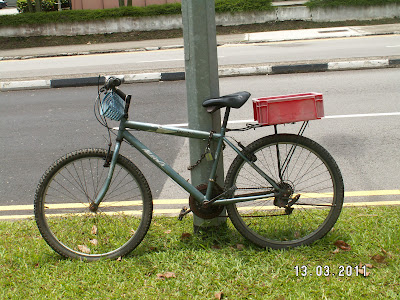One of the essays was about community centres. It reminded me of his visit to our kampong, Lorong Kinchir in 1962. As I was only ten years old then, I cannot recall much other than the usual fanfare. But I do know that my father was involved in the welcome party. My father, as one of the few residents who could speak English, probably played a big role in liaising with the authorities. Furthermore, he, together with our village chief, a Mr Low Thiam Aik represented our kampong in the Serangoon Gardens CCC (citizens’ consultative committee).
I was very happy to be reconnected with one of Mr Low’s grandchildren, Eng Leong, who had read this blog. Just two days ago, I met up with him and we spent almost an hour at a Yishun coffee shop trying to recall the people and places of our kampong. He shared some of his family photos and gave me a spare copy of this classic which I had been searching high and low for. It was taken at our kampong’s community centre during the prime minister's visit.
 Besides my father who is seated on the extreme right, my Seventh Uncle who is seated on the extreme left and Mr Low who is on PM Lee’s left, I could not identify any other faces even though many of them looked familiar. You would notice that besides PM Lee, there is one other person not wearing a ribbon on his chest. He is seated second from the right. Hence, he is likely to be a visitor with PM Lee’s entourage and not from our village.
Besides my father who is seated on the extreme right, my Seventh Uncle who is seated on the extreme left and Mr Low who is on PM Lee’s left, I could not identify any other faces even though many of them looked familiar. You would notice that besides PM Lee, there is one other person not wearing a ribbon on his chest. He is seated second from the right. Hence, he is likely to be a visitor with PM Lee’s entourage and not from our village.Question. Who is this gentleman?
Related post: Remembering September 11th














 A modern stopwatch with dual displays.
A modern stopwatch with dual displays.


